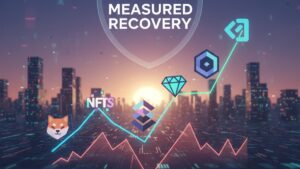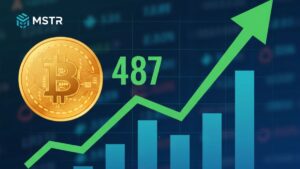TL;DR
- NFT lending volumes have dropped 97% since January 2024, falling from one billion dollars to just 50 million in May 2025.
- Analysts see potential revival through the tokenization of real-world assets, such as real estate and commercial invoices, which could offer more stable collateral options.
- GONDI has overtaken Blur as the leading platform, shifting focus to art NFTs as preferred loan collateral.
The NFT lending industry is facing an unprecedented crisis: volume has collapsed 97% from its January 2024 peak of one billion dollars to a mere 50 million today. User activity has also plummeted, borrowers are down 90%, while lenders have declined by 78%. Furthermore, the average loan size has shrunk from $22,000 to only $4,000, indicating a more conservative attitude in the face of a volatile market and uncertain returns for participants.
Despite these numbers, platforms like GONDI are innovating and leading the market with a new strategy: replacing the speculative model with one centered on long-term value and culture. Art NFTs like CryptoPunks, Fidenzas, and Autoglyphs are emerging as the preferred collateral, displacing more commercial collections. Loan durations have also shifted, with the average dropping from 40 days to 31, signaling a more tactical approach to liquidity management. Additionally, there’s higher turnover in shorter loans, which may indicate a structural shift in how more active users approach borrowing in the NFT space.
Real-World Assets As The Next Frontier
One possible recovery path for the sector is the integration of real-world assets into the NFT ecosystem. Tokenizing real estate, invoices, or yield-generating assets could provide more stable and trusted forms of collateral, appealing to both users and institutions. This is more than just speculation, some protocols are already building tools based on artificial intelligence, credit scoring systems, and undercollateralized lending models to encourage broader adoption.

Furthermore, an intent-based user experience—where someone can request “$3,000 for 30 days” without dealing with technical complexity—has the potential to welcome a wave of new participants and further diversify the ecosystem in meaningful ways. More transparency and regulatory clarity could also play a key role in building user trust and institutional involvement.
NFT Lending Isn’t Dead—It’s Maturing
Far from vanishing, the NFT lending sector is undergoing a profound transformation. The speculative hype has given way to a more sober, potentially stronger phase. If the next wave is built on real utility, efficient design, and tangible backing, NFT lending could not only survive but re-emerge as a more resilient and decentralized financial alternative, one that is meaningfully connected to the real world.










